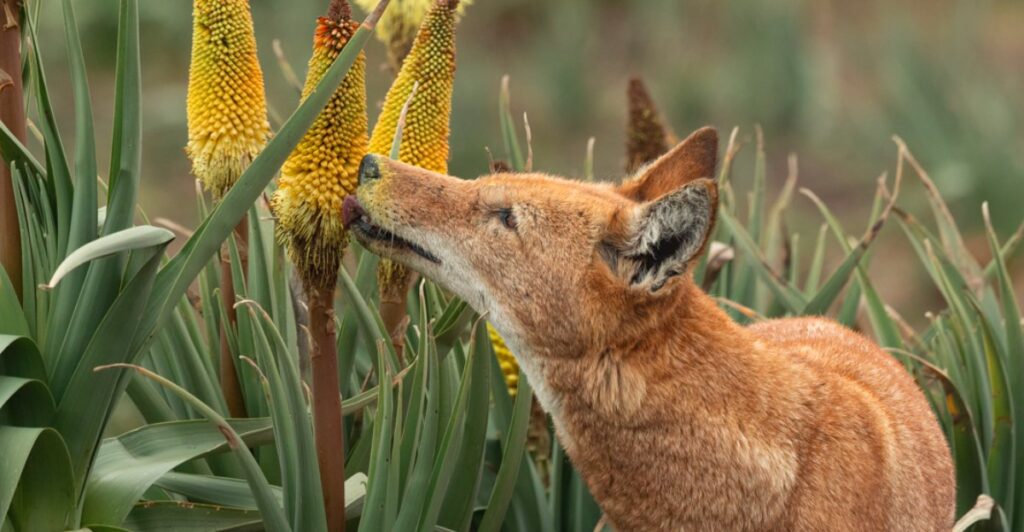
The Ethiopian wolf is a rare carnivore that calls Africa its home. They are an endangered species indigenous to Ethiopia’s Afroalpine highlands. Adapted for hunting rodents, although recently, the species has been exhibiting strange behavior – that looks like pollinating.
Researchers noticed that the wolves were found feeding on nectar from Kniphofia foliosa flowers. This is believed to be the first time large carnivores have been documented engaging in pollination. These findings were revealed through fieldwork conducted in the highlands of Ethiopia, where scientists captured this remarkable interaction on camera.
Ethiopian Wolves’ Unique Feeding Habits
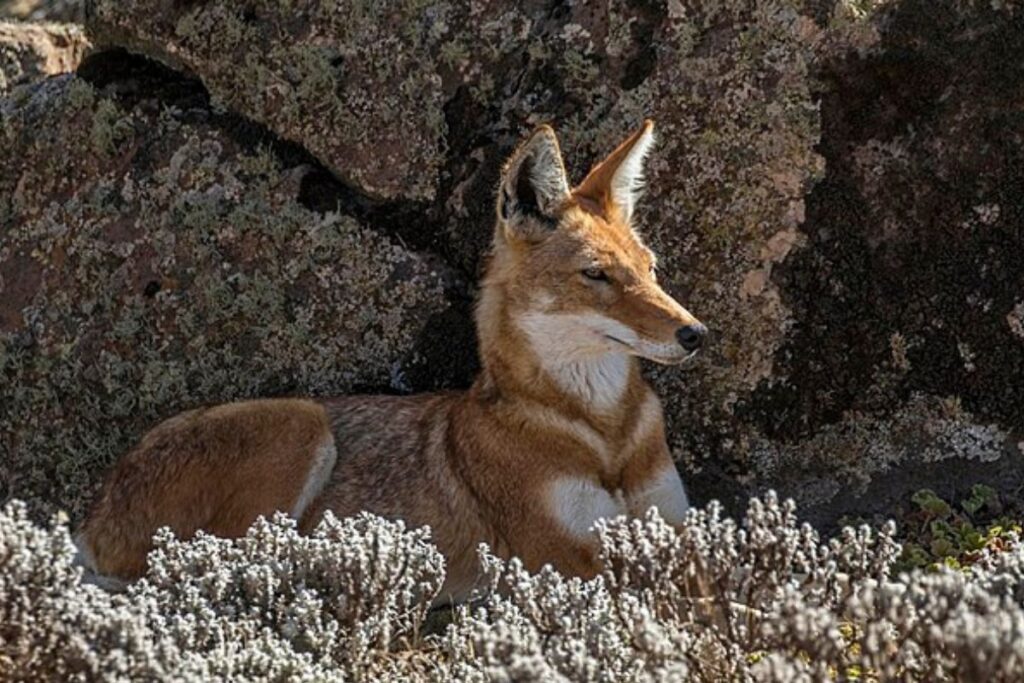
Ethiopian wolves’ straying away from their usual diet of preying on rodents for the Kniphofia foliosa nectar is a surprising departure from their carnivorous diet. These flowers, also called red hot pokers, produce plenty of nectar and offer the wolves an alternative food source during the dry season when rodents are harder to find.
This shows a unique adaptation that demonstrates the wolf’s ability to survive in changing environmental conditions. It also sheds light on the interconnected relationships within their high-altitude habitat.
Carnivorous Pollinators
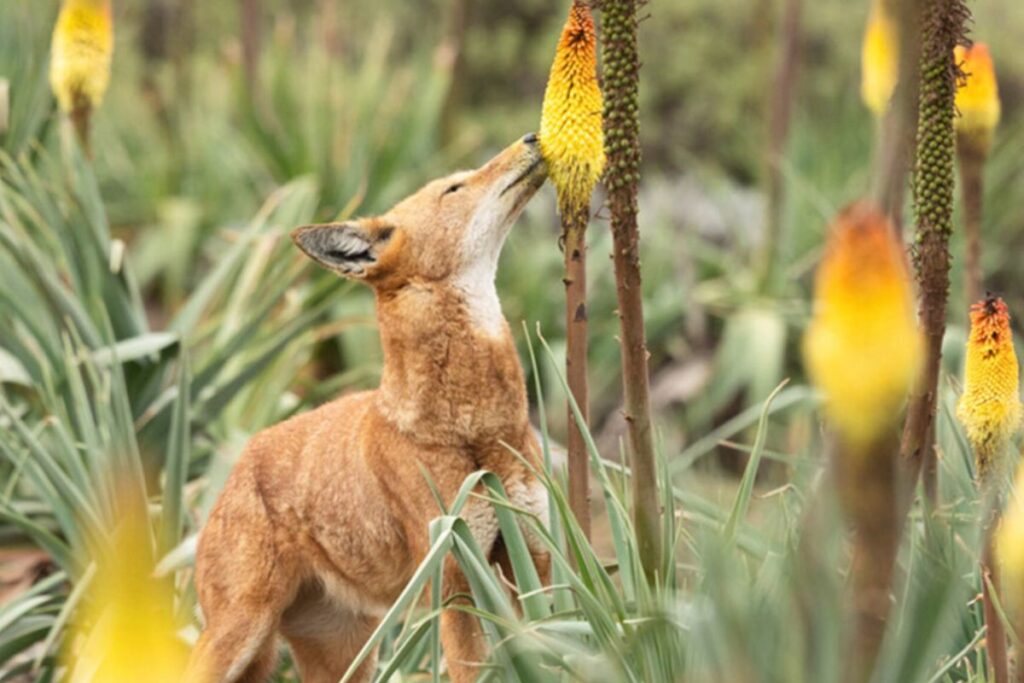
They are one of the only carnivores that accidentally pollinate by adapting to food scarcity. From feeding on multiple flowers, they are essentially pollinating the same way that bees do – a first for a carnivore.
While pollination is typically associated with insects and birds, these wolves demonstrate that even large predators can contribute to plant reproduction. This discovery means that animals that haven’t ever pollinated before, can start doing so naturally. The wolves are cementing their role in maintaining plant diversity in the Afroalpine ecosystem through adapting to survive – even if they don’t know it.
Conservation Implications of Nectar-Feeding Behavior
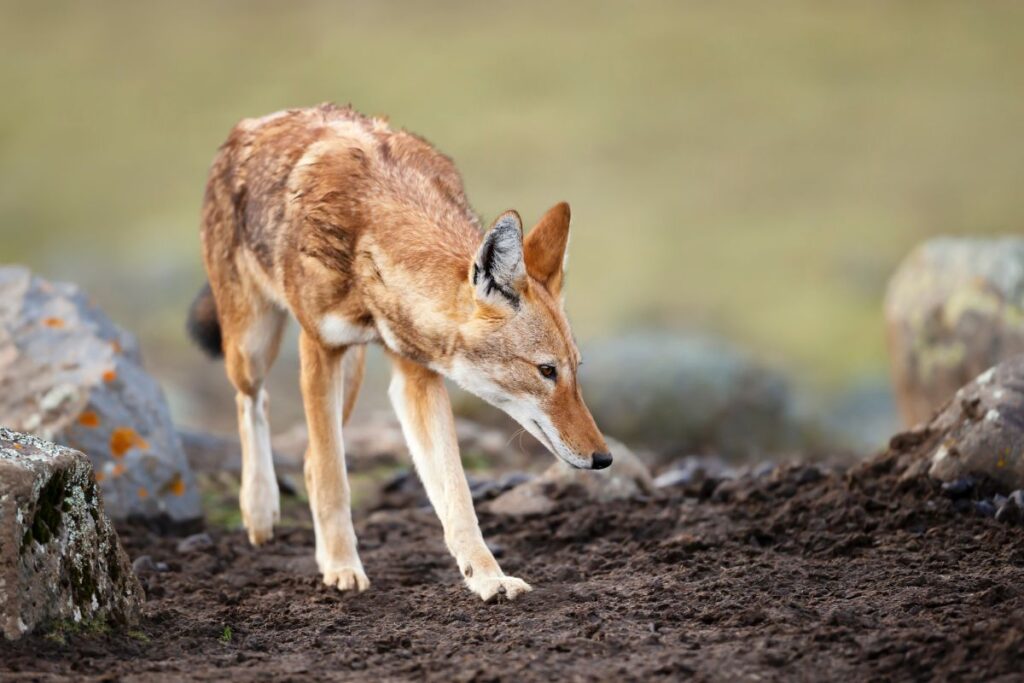
The nectar-feeding behavior of Ethiopian wolves highlights their ecological significance and the importance of preserving their habitat. With these wolves contributing to pollination, it’s more important to protect them and safeguard their survival so that the plant species they pollinate can also thrive.
This finding calls for a subtler approach to conservation, with new connections between species being found. There is a new need to study animal behavior in natural settings to uncover more hidden ecological roles.
How the Discovery Was Made
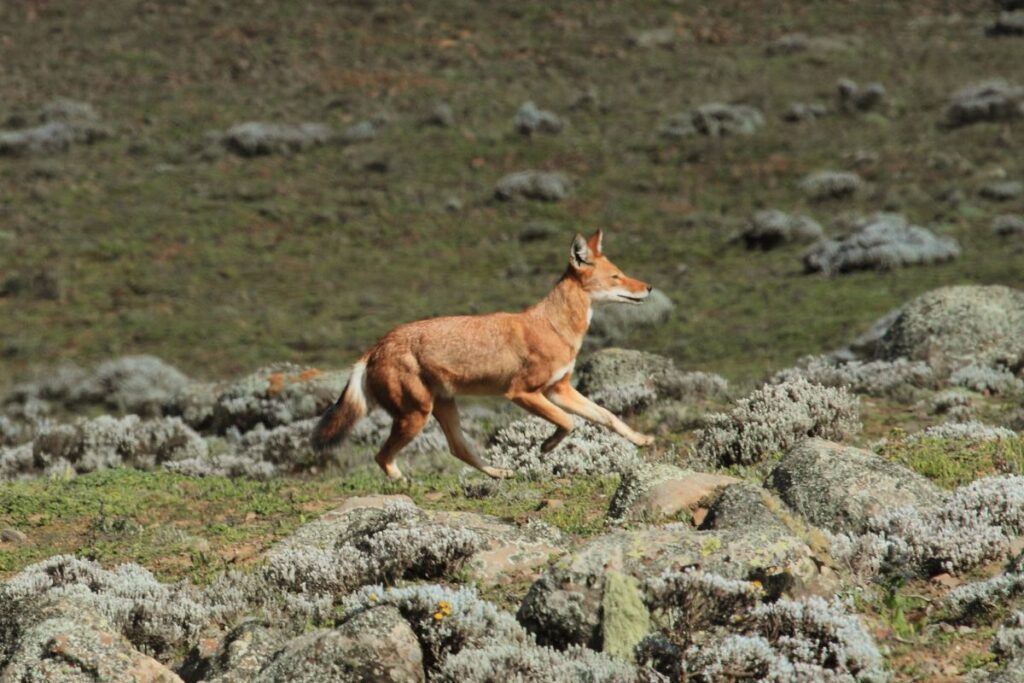
Scientists observed Ethiopian wolves feeding on Kniphofia foliosa flowers during long-term field studies in the Bale Mountains of Ethiopia. Camera traps and direct observations revealed the wolves delicately licking nectar from the flowers without destroying them in the process.
The wolves are being deliberately delicate and this feeding behavior suggests that the wolves have developed a method to access this resource efficiently, demonstrating their adaptability and intelligence.
Seasonal Challenges for Ethiopian Wolves
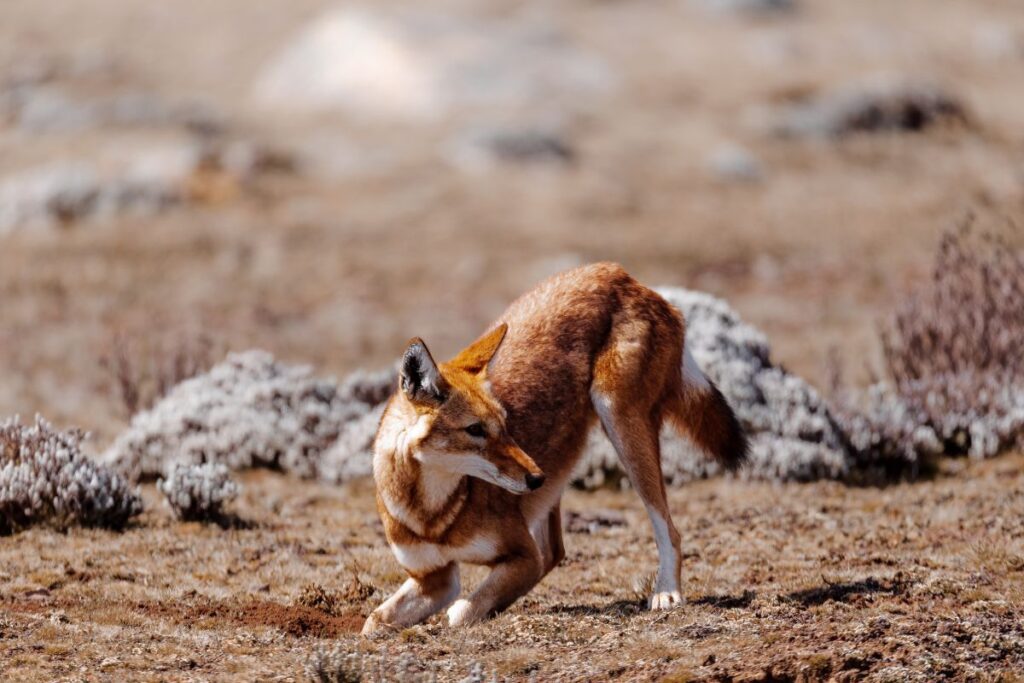
During the dry season, the grasslands provide fewer rodent prey, pushing Ethiopian wolves to explore alternative food sources – this is when they found the nectar appealing.
The Kniphofia foliosa flowers bloom in high numbers during this time, offering a reliable, if not small, energy source. This seasonal shift in diet shows the wolves’ ability to adapt to resource scarcity. As they are no strangers to adversity and hardship, it makes sense that they’ve adapted in such a unique way.
Not Sustainable For Their Energy
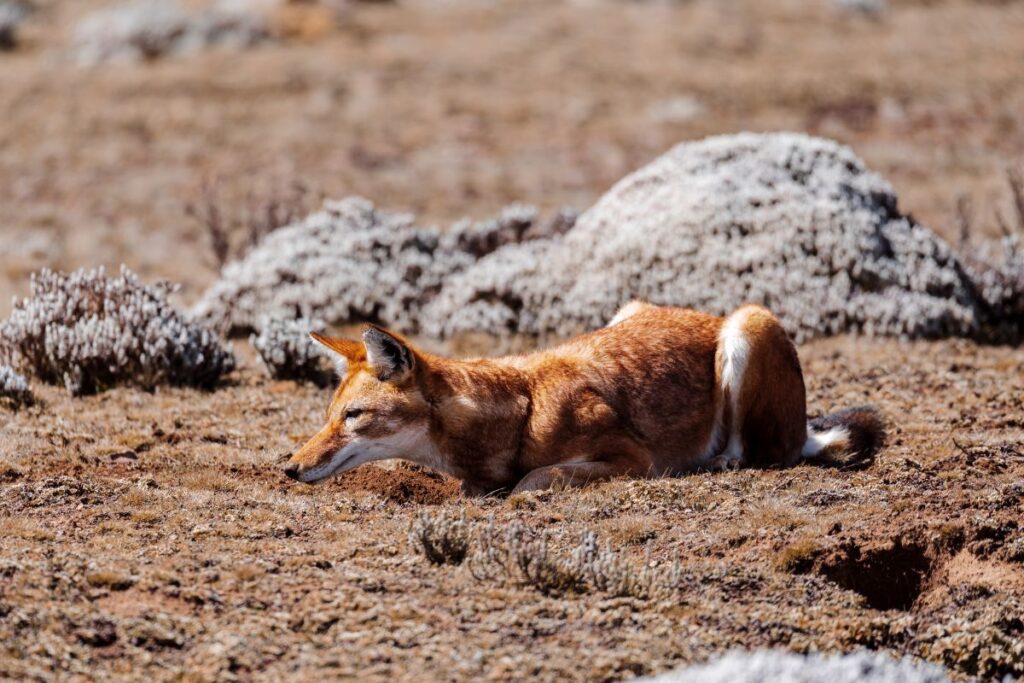
A study by the Ethiopian Wolf Conservation Programme (EWCP) concluded that the wolves aren’t likely to eat the nectar as a complete alternative to other food sources. The nectar doesn’t have enough to sustain the energy it requires.
Researchers suggest it might serve as a “dessert” supplement. Interestingly, according to the study, the wolves’ muzzles become coated with pollen while feeding, hinting at an unusual plant-pollinator relationship involving a large carnivore, a rare ecological interaction.
Broader Ecological Implications
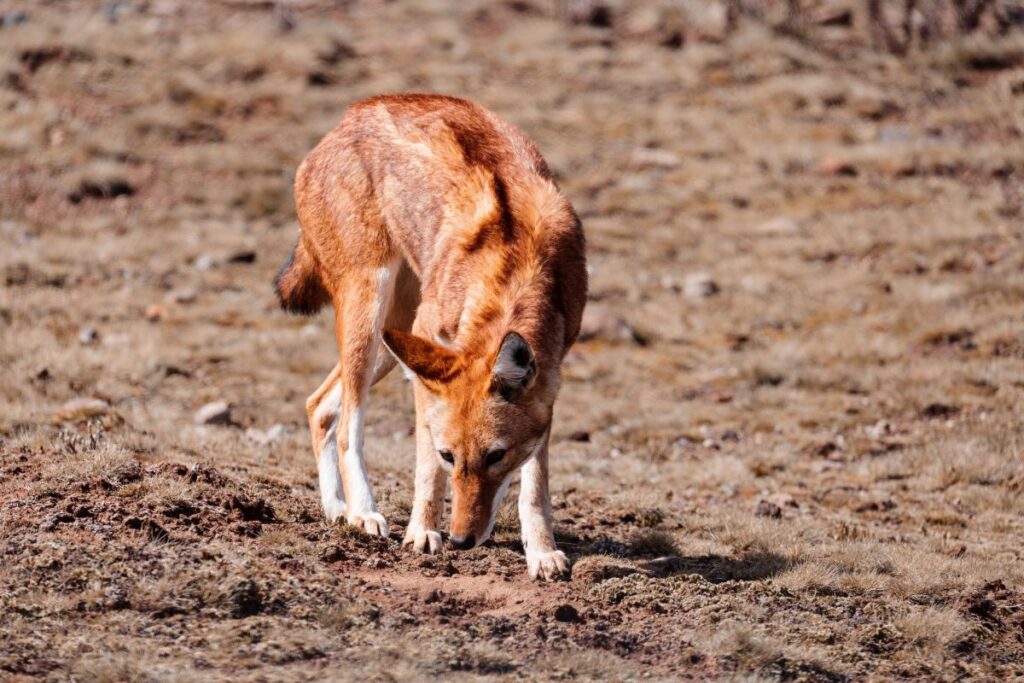
The Ethiopian wolf’s becoming a nectar feeder and pollinator has huge implications for its habitat. Aiding in the reproduction of Kniphofia foliosa increases the plant populations critical to the habitat.
This discovery also raises questions about other potential pollinators among carnivores and their ecological contributions, inviting further research into these unexpected interactions.
A Closer Look at Ethiopian Wolves
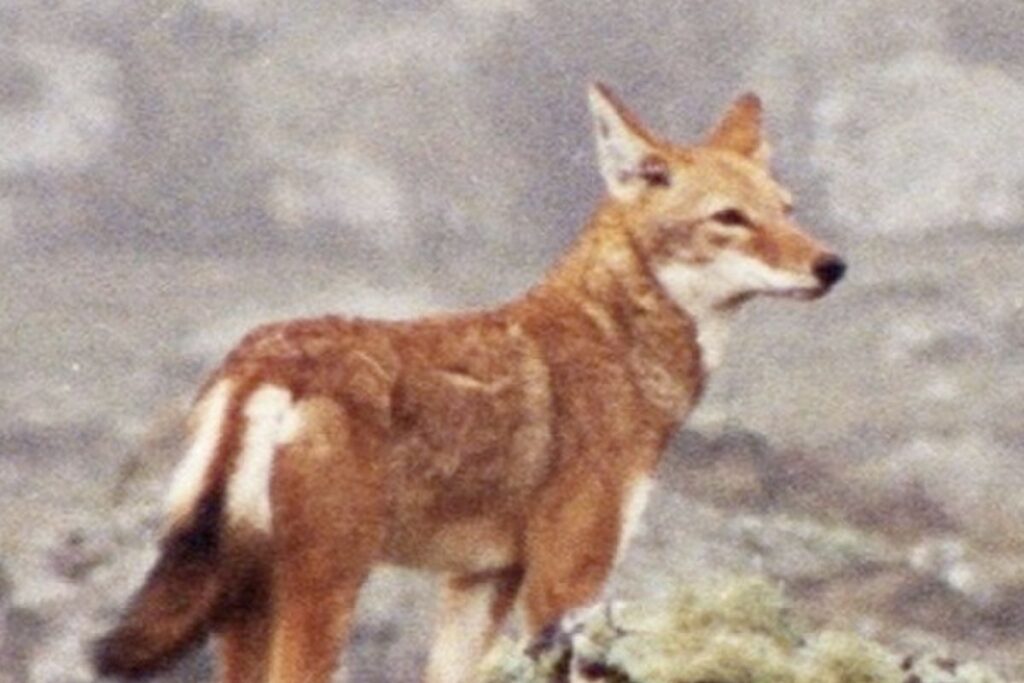
Ethiopian wolves are expert hunters, mostly feeding on rodents in their grassland habitat. With a population of under 500 individuals, these wolves are at risk of extinction.
Ethiopian wolves face numerous threats, including human encroachment and diseases like rabies. Protecting their habitat and implementing vaccination programs are critical for their survival. The newfound role of these wolves in pollination adds urgency to conservation efforts, as losing them would mean disrupting both animal and plant ecosystems in the Afroalpine regions.
The Importance of Afroalpine Ecosystems
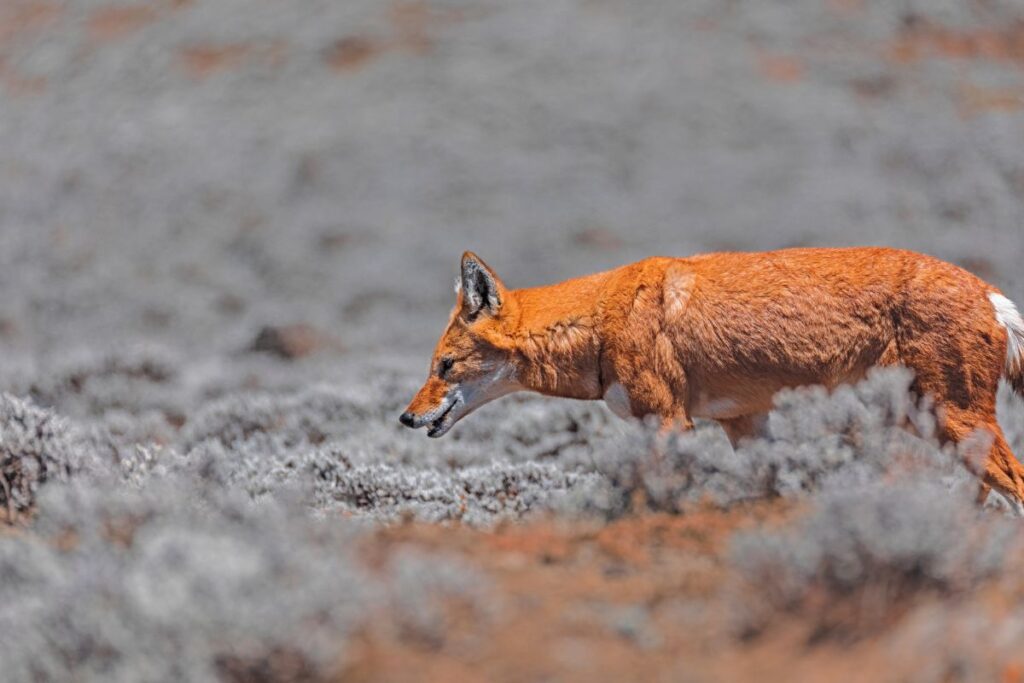
These Afroalpine ecosystems, found at high altitudes in Africa, are biodiversity hotspots and home to many endemic species like the Ethiopian wolf and Kniphofia foliosa. They are also fragile ecosystems that are easily affected by external factors.
Climate change increasingly threatens these ecosystems, altering plant and prey availability. Understanding the intricate relationships within these environments is important for devising effective conservation strategies and increasing the chance of survival of their unique inhabitants.
Global Significance of the Discovery
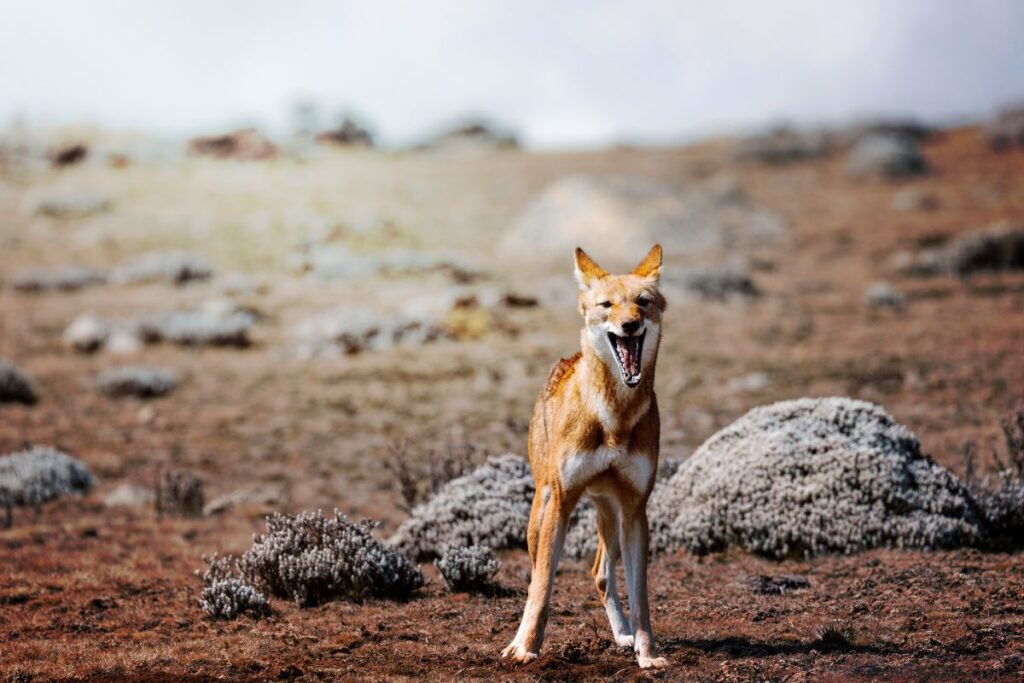
The Ethiopian wolves’ nectar-feeding behavior challenges conventional views of carnivore diets and ecological roles. It highlights predators’ adaptability and potential contributions to plant reproduction.
This discovery could inspire new research into similar behaviors in other species, expanding our understanding of animal-plant interactions and their implications for ecosystem health.
Future Research Opportunities
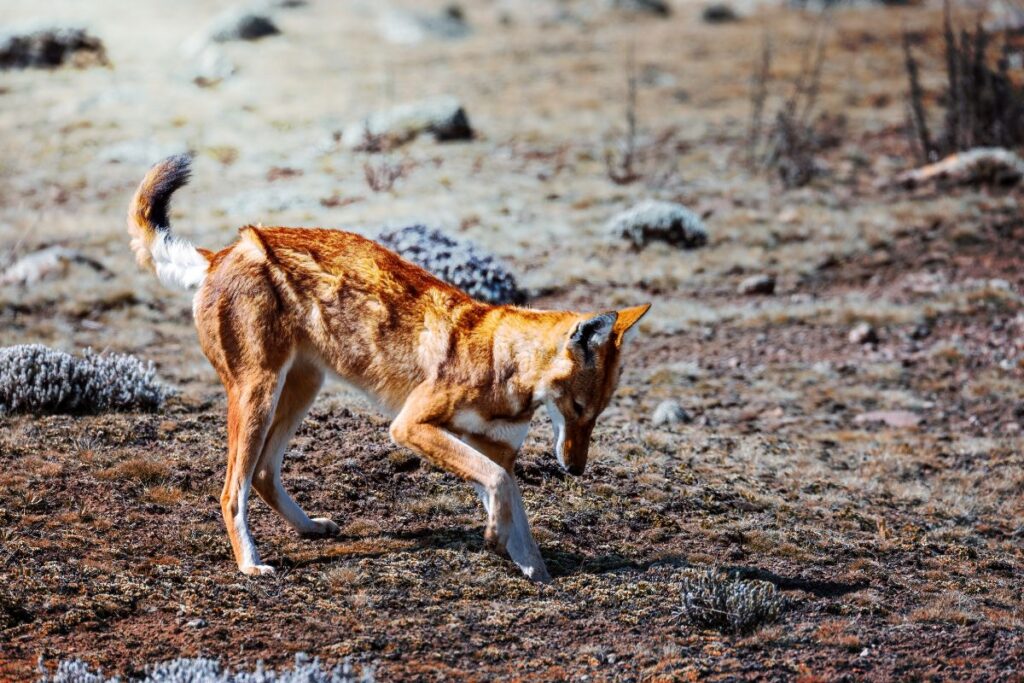
The surprising behavior of Ethiopian wolves opens doors for future studies on the ecological roles of carnivores. Researchers aim to explore how widespread this behavior is, its long-term impact on plant populations, and whether similar behaviors exist in other predator species.
These studies could provide valuable insights into how animals adapt to environmental changes and the delicate dynamics of ecosystems.
A Call to Action
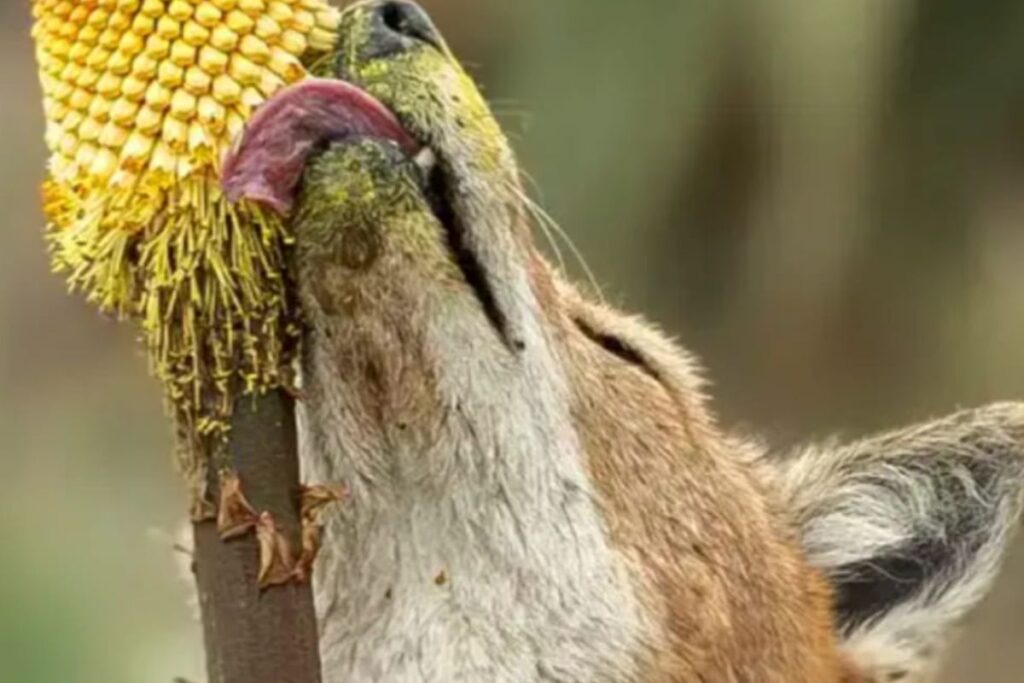
The discovery of nectar-feeding Ethiopian wolves underscores the urgency of protecting their fragile ecosystem. Conservation efforts must prioritize habitat preservation, research funding, and community engagement to ensure these wolves and their environment thrive.
With the wolves already living in a fragile ecosystem and being endangered, their habitat and environment could change rapidly over the following years. That’s why it is important to observe the wolves’ natural adaptations and what they continue to do going forward.
Source:
Watch Ethiopian wolves drink flower nectar, a first for a large carnivore.
Stay connected with us for more stories like this! Follow us to get the latest updates or hit the Follow button at the top of this article, and let us know what you think by leaving your feedback below. We’d love to hear from you!







